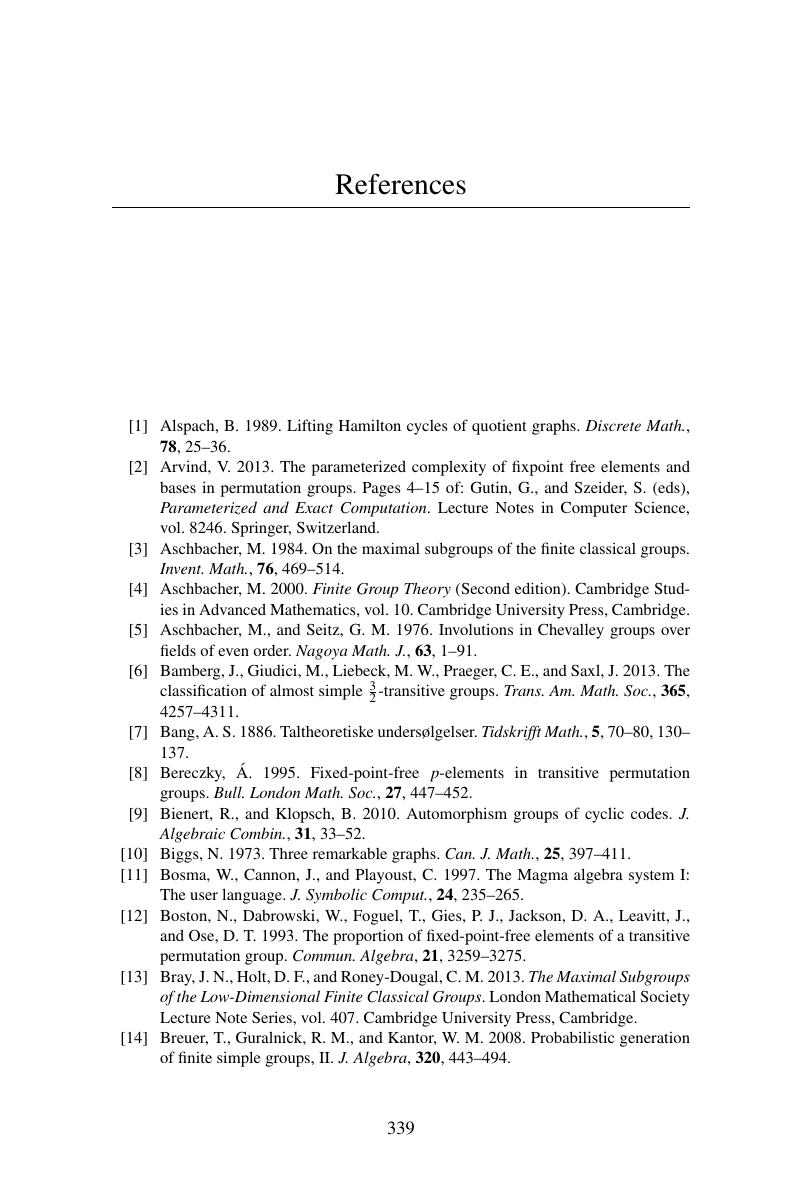Book contents
- Frontmatter
- Dedication
- Contents
- List of tables
- Preface
- Acknowledgements
- Notational conventions
- 1 Introduction
- 2 Finite classical groups
- 3 Conjugacy classes
- 4 Subspace actions
- 5 Non-subspace actions
- 6 Low-dimensional classical groups
- Appendix A Number-theoretic miscellanea
- Appendix B Tables
- References
- Index
- References
References
Published online by Cambridge University Press: 18 December 2015
- Frontmatter
- Dedication
- Contents
- List of tables
- Preface
- Acknowledgements
- Notational conventions
- 1 Introduction
- 2 Finite classical groups
- 3 Conjugacy classes
- 4 Subspace actions
- 5 Non-subspace actions
- 6 Low-dimensional classical groups
- Appendix A Number-theoretic miscellanea
- Appendix B Tables
- References
- Index
- References
Summary

- Type
- Chapter
- Information
- Classical Groups, Derangements and Primes , pp. 339 - 344Publisher: Cambridge University PressPrint publication year: 2016



